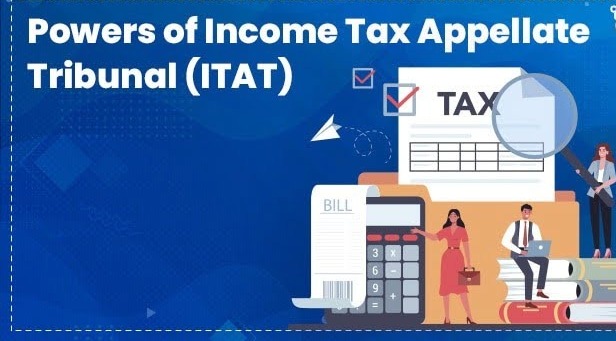Sanjay Kishan Kaul, C.J.@mdashEducation is an instrument of empowerment. This is the philosophy behind various steps taken by the Government of India and the State Governments for furtherance of education to empower the young generation. Unfortunately, the inadequacy of educational institutions as well as absence of requisite quality is, again, a matter of common knowledge. For years, no attention was paid to the important aspect of ensuring adequate remuneration to the teaching faculty, with the result that persons never took to teaching. One fine day, we could not have produced the requisite number of teaching faculty to meet the needs of teaming millions of new generation.
2. The aforesaid is the principal reason why, at great cost and personal inconvenience, parents are sending their young ones for education abroad. Australia is one such destination. It is to advance the career of their son that the petitioners applied for a loan of Rs. 13,00,000/-, which was duly sanctioned by letter dated 23.11.2006. In order to ensure due repayment of the loan, a small Chemist shop was mortgaged, which is the livelihood of the petitioners, aged 62 and 55 years, respectively. They are running a Chemist shop in the said property measuring 50 square yards, the estimated value of which, while granting the loan, was Rs. 15,10,000/-.
3. The son of the petitioners decided to transfer his studies from Victoria University, Melbourne to Meridian International Hotel School, Melbourne. The necessary steps were taken by the petitioners of informing the Bank. Apparently, the hope of the petitioners was that after completing his education, their son would be able to work and raise sufficient funds to repay the loan. This did not materialise as has been happening in the current economic situation all over the world. Moreover, the son of the petitioners was not keeping good health. They are, thus, left with a huge liability of the loan. The petitioners defaulted in complying with their financial obligation. The account was declared a Non Performing Asset. Proceedings were initiated under the Securitisation and Reconstruction of Financial Assets and Enforcement of Security Interest Act, 2002. It is at this stage that the petitioners approached this Court, almost in desperation.
4. In the course of proceedings before us, learned Senior Counsel for the petitioners fairly stated that the petitioners needed some breathing time and they were willing to settle the loan amount.
5. In order to make endeavour of reasonable resolution of the issue, accounts inter se were exchanged and various endeavours made. It is not necessary to take note of the details but suffice to say that those aspects stood ironed out. In fact, one of the issues raised by the learned Senior Counsel for the petitioners was that there was a Circular dated 11.3.2014 granting concession to the students but, then, that was applicable only to the economically weaker students in India. The petitioners, thus, faced a situation where they had to repay the disbursed principle amount of Rs. 5,97,986/- along with interest at the rate of 12.75 % per annum at monthly rest from the date of disbursement of loan till it was declared a Non Performing Asset, whereafter, as per Reserve Bank of India Guidelines, base rate of 10.25 % per annum simple interest was chargeable. It is in these circumstances that on 21.4.2014, we called upon the learned Senior Counsel for the petitioners to obtain instructions qua the time period within which the petitioners will be able to repay the entire loan amount. Simultaneously, we called upon the respondent-Bank to take a sympathetic view of the matter, as it was an education loan; the student who availed of the loan himself was not keeping well and there are lack of current employment opportunities in the country, but all that was accepted was that the base rate would be applied from the date of the loan, especially in view of the willingness of the petitioners to repay the loan.
6. The petitioners have not only, within the short period of time, repaid the amount of loan but also interest quantified at 10.25 % per annum throughout, in order to settle the liability. The respondent-Bank, however, seeks to take a stand that it must recover every penny of interest like shylock.
7. Learned counsel for the respondents has referred to the judgments of the Supreme Court in
8. On perusal of the two judgments, it is obvious that these deal with commercial loans. The consistent legal position is that commerce may result in profits and losses and, thus, if the profits are not to be shared, so are the loans not to be burdened on the Bank and, thus, the securities available with the Bank could be used to recover the loan amount. Despite this principle, there are various One Time Settlement Schemes floated by the Banks and financial institutions to improve their balance sheets by seeking to write off huge amounts under the garb of One Time Settlement Schemes. Thus, large defaulting commercial parties are greater beneficiaries of such One Time Settlement Schemes while, often, a smaller borrower is ignored. We are faced with, in the present case, not only a small borrower but an education loan. The principle applicable to commerce and trade loans cannot be applied to education loans, in view of the initial paragraph of this judgment itself. A greater compassion is required for the same. The total amount that the petitioners have paid till date is Rs. 10,58,000/- against the initial loan of Rs. 5,97,986/-. This is inclusive of interest at the rate of 10.25 % per annum. In any case, they are liable to pay this amount. This is a fit case where the respondent-Bank ought to have exercised its discretion to waive of the differential between the interest of 10.25 % per annum simple interest and 12.75 % per annum at monthly rest, especially as the petitioners have come forth honestly to clear the loan amount. The net difference is only about Rs. 2 lacs and learned counsel for the petitioners, on instructions from the petitioners, states that if they could they would have even paid this amount but, even after sale of the personal assets of petitioner No. 2, whatever they could raise, they have paid and they would be left with without any livelihood if even the Chemist shop is taken. That shop is also not running on account of the ceiling action taken by the respondent-Bank.
9. In the peculiar facts and circumstances of the present case, we are, thus, inclined to treat the loan as satisfied on the payment having been made and direct the respondent-Bank to release the shop within a period of one week from today. The property documents be also returned to the petitioners within the same period of time.
10. The petition, accordingly stands disposed of.

